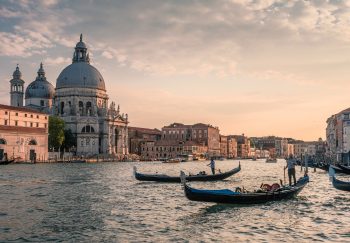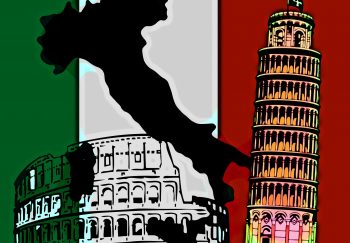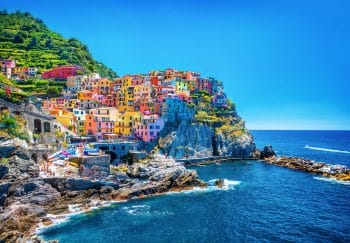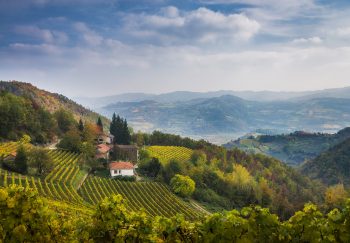“There are so many Sicilies, we could never count them all. There’s the carob tree’s green Sicily, the white of salt-flats, yellow of sulfur, blonde of honey and purple of lava. The “babba”, mild until it makes you look silly, Sicily (G. Bufalino).
The province of Ragusa is the last definition given to Sicilians almost by antonomasia. It was nominated as a provincial at a particular moment in its history. The ragusano isn’t offended. He has a wandering farmer eye as well as a farmer of the gentry, just sleeping. This has learned that while one shouldn’t settle for a title, or for possessions, it is important to capitalize them. It was like the history of the territory before. If you take a moment to study their language, history can be told here from the Duomo di San Giorgio to the Ibla living room, which is a bastion of rebirth to all the baroque of “two” Ragusa.
They recount the heroic efforts of the people and the pride and victory over the disaster of 1693 earthquake.
This city seduces and charms. It preserves an old candor and a soft look, starting with white sheets that are still warm from their bodies, and then extending to deep valleys furrowed from streams.
I was asked by a traveler to visit this beautiful part of Val di Noto on a spring day.
I would take him along an old road that crosses the Alti Iblei. This is the last strip in the province of Catania Vizzini. It passes through a state town of ancient foundation. The home of Giovanni Verga was perched on a hill. Next, take the old road connecting the Etnean centre to the Ragusa region. You will pass through valleys and turn, climb on Iblee hills, and then meet beautiful green forests rich in streams, farms, cliffs, and caves with suggestive titles, such as the hollow of Volaci. These caves are home to ancient rock tombs like the Saints Caves and Coins. They also provide rich legends about rich trusses.
You might consider a stay in the charming Monterosso Almo. However, you are in the Most Beautiful Villages of Italy. This town has impressed Tornatore enough that it decided to establish its ” Man of the Stars“.
The small center’s heart is a lovely square that is kept clean and maintained. Here, life is peaceful and quiet and people can stay late talking to friends.
The aromas of freshly baked pastries and coffee drew me to a downtown bar to offer my guest a taste of the irresistible ravioli.
All the churches are open here, but I recall the Addolorata Church as a little jewel, declared a national treasure, and set in a small square that guards a district that has been shaped over the past three hundred years.
I continued my exploration of the province and after leaving Monterosso, I was left wondering about a crucial decision: left or right?
Without any pretense of political power, I would tell my traveler that Ragusa can be reached by both roads. However, the decision must be made instinctively. The main road runs to the city of Chiaramonte Gulfi. This is why it’s called Balcony of Italy because of its perched location. Its name is an ancient one, and it was named after the Earl of Modica Manfredi Chiaramonte, a feudal lord.
Back to the taste: Since we are almost at lunchtime, the center boasts a rich culinary tradition, which includes traditional products from the countryside and rich choices of meat, served in small restaurants, or local farms-houses, in the center.
You can walk to the historic center and see its many churches and small museum after lunch.
The left-hand way would have brought us to Giarratana. This is the presepe city. Its historic center, Cuozzu, lights up with colours and sounds during Christmas, while the rest of the year it houses a trail of historical house museums that tell the story of rural life.
You can be out in just a few minutes because the town is so small. I would stop by a bakery to get intoxicated with the aroma of homemade cakes and bread, then I’d continue my journey to Forest Park Calaforno , true foreshadowings of Eden with its forest of trees and pines, rivers, streams, waterfalls, mills, and even a picnic area.
I continued on and within a few km, I found myself suddenly on a creek that runs between the blue of my sky and the one of… the lake! Santa Rosalia Lake, a local characteristic plague, was used to make small farms and houses into restaurants or farms.
Through small gorges and ancient villas with Mediterranean essences nurseries, Ibla is finally reached Ibla, first inhabited town of Ragusa. It’s almost a city, an important part of the open air set of Il Compmissario Montalbano.
The cathedral’s dome overlooks the roofs of surrounding houses. Its wide facade backdrop acts as a backstage to the square. This can be reached by following a maze made up of magnificent palaces.
Here is the Conversation club, an elegant place for Ragusa gentry to meet. Then, to the right, Palazzo Donnafugata which is still owned by the Arezzo family with its small theater from the nineteenth century.
Another time, we are enchanted by the beauty of elegant architecture, sometimes exaggerated and lashing as in Cosentini Palace with its speaking baroque. This is where begins one of the ancient roads, which connects Ragusa Superiore’s old living quarters to Ragusa Moderne’s modern.
The narrow streets, low houses, courtyards, and intricacies that make up deserted neighborhoods, with their windows shut, and the soapy water patches of fragrant basil or geranium pots at the gates, are all equally disturbing. The route of the steps crosses the city and leads to a square with the huge staircase of the Purgatory Church. Or to the colours and shapes of Arab-Norman, the Itria Church. It has a dome in the shape and colors of a minaret. You will find an alleyway that is never named, a small church, oratory, such as Santa Petronilla or a Gothic portal. These are the last remnants of the Church of San Giorgio.
There are also the Giardini Iblei ventilated, which were created to add prestige and decoration to the area. At that time, beauty was a feeling of community sharing. Ibla’s elegant gardens preserve the Belle Epoque’s charm. In those days, the appearance of small, dazzling umbrella-wielding ladies would not be a natural wonder in trompe lait.
The Province of Ragusa has many landscapes. Its highlands are covered with green pastures in the winter and scattered with deep caric valleys. Eventually, these areas will become a vast coastline of beaches with clear water. Its coastlines extend seamlessly from Sampieri to Scoglitti, Donnalucata to Punta Secca, where you will find the famous Commissioner’s House. Also, it is home to Caucana, an ancient port Sicilian Greek, and Kamarina which was an important colony in Syracuse that was destroyed by the Arabs. The museum also has a spectacular view to the ocean.
The Forest Reserve Club is also located on the same breathtaking coastline. It is bordered by Aleppo pines, Mediterranean bush and forests of Aleppo pines. Warm crystal clear waters and lush vegetation of essences of woods take you to the beach through high dunes.
Other historic towns are UNESCO heritage, and the Commissioner Montalbano Modica and Scicli.
The “Modica” ancient city is a noble, opulent, and populous city that was built around two rivers, Pozzo dei Puni and Janni Mauro. It has been covered by floods over the centuries and clings to the valleys with spectacular staircases such as the one of St. George’s with its 250 steps! After taking a deep breath, you can enjoy a spectacular view of the city from the top. There are many churches here, and they are rich and numerous. You can also enjoy a wonderful open-air book and the traditional gastronomic specialties. These include the main course and the sweet liqueurs. Sometimes, you will get chocholate, which often combines both.
The climate is mild and the people are friendly and warm. The city invites you to “take your time” and to visit the shops that make cocoa according to an ancient recipe that has been around for centuries. It is best to see it in its original form in old cupboards with pizzo lacies. This means that you can’t go out without tasting the Modica fresh roasted coffee, pistachio liquor, and cinnamon blancmange. You are intoxicated by the apotheosis flavors and scents and you meet the owner and make new friends, greeting each other as old friends.
The two other most populous cities in Ragusa are Comiso as well as Vittoria. This is the first location of a new airport and the second for its vegetable-rich cuisine. Both cities are well worth a visit. Victoria is the latest province, established in 1607. Like the rest, it was rebuilt after the great earthquake. It has also become wealthy with the urban boom in the ’70s and ’80s over the past century.
This is where I would start my itinerary. A walk in the seaside town of Scoglitti under clear skies, often in winter, would allow me to see the archaeological museum. It contains many underwater treasures and stands on the promontory of an ancient Greek-Roman colony.
The evening will see a return to history in the heart Liberty City. Via Cavour, Piazza del Popolo and Via Cavour are both on hand. This theater is an exceptional jewel of neoclassical arts, dedicated to Vittoria Colonna, the city’s founder. Perhaps to see an operetta. In an atmosphere of the past, at the location that inspired Emidio Greco’s 2002 film version of The Council of Egypt from one of Sciascia’s most acclaimed novels. In June, the city is resounding with the sounds of a jazz candidate to International Festival. The beautiful white stone monuments, Piazza San Giovanni, and the castle, are open for tastings and exhibitions. A glass of Cerasuolo di Vittoria is a good choice to end the night …..
The Comiso is a nearby destination. It has beautiful late-baroque churches such as Sa n Biagio and Santa Maria delle Stelle. Piazza Fonte Dianna, are all examples of the continuity of the city’s history. Comiso is worth a visit, to learn more about the places of Gesualdo Bulino, who was the first person we met on our journey.











